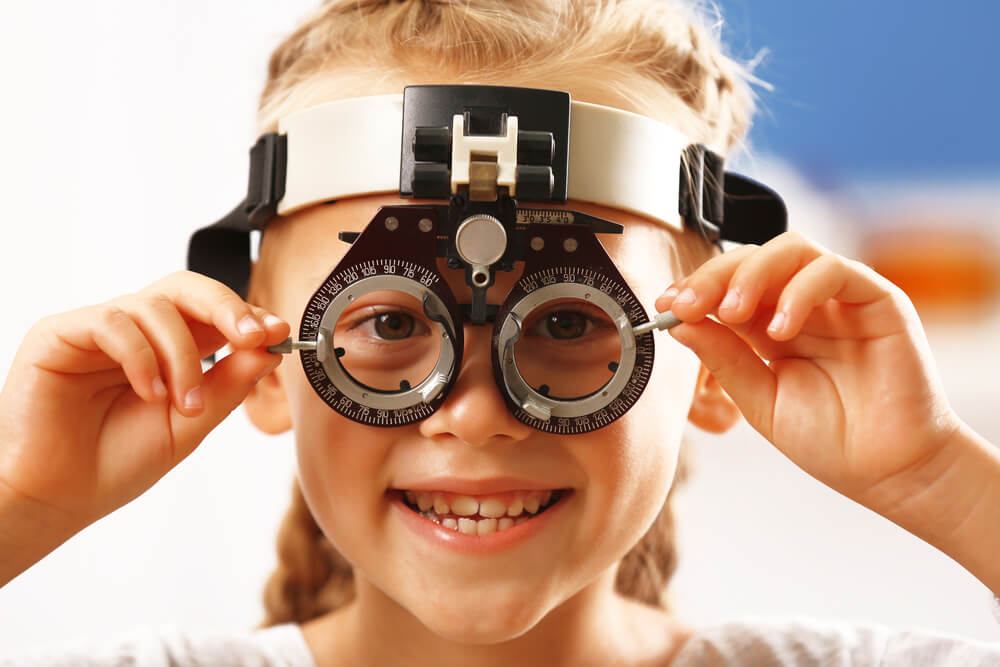Did You Know...
| Infants and Toddlers (Birth to 24 months) | Infants and toddlers should undergo their first eye examination between the ages of 6 and 9 months |
| Preschool Children (2 to 5 years) | Preschool children should undergo at least one eye examination between the ages of 2 and 5 years |
| School Age Children (6 to 19 years) | School children aged 6 to 19 years should undergo an eye examination annually |
Infants (six months or younger):
Newborns have all the ocular structures necessary to see, although these are not yet fully developed. At birth, your baby can see blurred patterns of light and dark.
During the first four months, their visual horizon will expand from a few centimetres to many metres. Their vision will become clearer and colour vision will begin to develop. Their two eyes will start working together. By four months of age, an infant’s colour vision is similar to an adult’s, and by the sixth month, your baby will acquire eye movement control and develop eye-hand coordination skills.
For the first six months, an infant’s eyes can appear slightly crossed or out of alignment, but this is usually normal. But if your infant’s eyes appear significantly crossed or remain misaligned after six months of age, contact your Doctor of Optometry right away. Your child may have strabismus, commonly known as crossed eyes, a condition that needs to be treated with eyeglasses, contact lenses, prisms and/or vision therapy and, in some cases, surgery. In time, if not corrected, the ignored eye will become unable to function normally and will become largely unused. This may result in the development of lazy eye.
Lazy eye, or amblyopia, is another condition that becomes apparent within the first six months of your baby’s life. This condition describes weak vision or vision loss in one eye as a result of an uncorrected prescription. If detected or treated before eight years of age, it will often resolve completely. It’s important to treat amblyopia early – with vision therapy, eyeglasses and/or contact lenses, or patching – as treatment becomes very difficult later on. Untreated, amblyopia can lead to blindness in the affected eye.
Visual abilities play a big role in early development. Doctor of Optometry recommend infants have their first eye exam between six and nine months of age. Children should have at least one eye exam between the ages of two and five, and yearly after starting school. An optometrist can complete an eye exam even if your child doesn’t know their ABCs. A Doctor of Optometry can use shapes, pictures, and other child-friendly ways to evaluate vision and eye health.
Preschoolers:
Between ages one and two, it’s important for a child to develop good hand-eye coordination and depth perception.
There are activities that can help improve these essential visual skills, such as playing with building blocks or balls of any shape and size.
Children at age two enjoy listening to and telling stories. It helps them develop visualization skills and prepares them for learning to read. At this stage of their development, toddlers also like to paint, draw and colour, sort shapes and sizes, and fit or assemble pieces. These activities are all integral to their visual development.
A preschooler’s eyes are not ready for prolonged or intense concentration at short distances, but they do enjoy TV. To make TV viewing easier on the eyes, the room should be softly lit, the television placed to avoid glare, and the child should sit further away than five times the screen’s width, taking periodic breaks from staring at the screen.
Be alert for symptoms that may indicate your child has a visual problem:
- red, itchy or watering eyes
- sensitivity to light
- an eye that consistently turns in or out
- squinting, rubbing the eyes, or excessive blinking
- a lack of concentration
- covering or closing one eye
- irritability or short attention span
- holding objects too close
- avoiding books and television
- visible frustration or grimacing
Protect your child’s vision. If you notice any of these symptoms, book an eye exam with a Doctor of Optometry. Your child should have a complete optometric eye exam between six and nine months of age. Children should have at least one eye exam between the ages of two and five, and yearly after starting school.
School-age children:
A school-age child’s eyes are constantly in use in the classroom and at play. For school-age children, several different visual skills must work together so they can see and understand clearly.
If any of these visual skills are lacking or impaired, your child will need to work harder and may develop headaches or fatigue. Often the increased visual demands of schoolwork can make greater demands on a child’s visual skills, pointing out a vision problem that was not apparent before school. The child may not realize they have a vision problem – they may simply assume everyone sees the way they do. A vision-related problem may cause some of the symptoms described below:
- headaches or irritability
- avoidance of near or distance work
- covering or rubbing of the eyes
- tilting of the head or unusual posture
- using a finger to maintain place while reading
- losing place while reading
- omitting or confusing words when reading
- performing below their potential
Conditions that may emerge during this stage in your child’s life include myopia or nearsightedness(blurred vision when seeing objects at a distance), hyperopia or farsightedness (blurred vision when seeing objects up close) and astigmatism (distorted vision at all distances).
Protect your child’s vision. If you notice any of these symptoms, book an eye exam with an optometrist. Your child should have at least one eye exam between the ages of two and five, and yearly after starting school.
Frequently Asked Questions
Should I have my child’s eyes examined?
Yes. Your child’s first eye exam should occur before he or she ever leaves the hospital at birth. Additional pediatric eye health screenings should occur every year from that point forward, with the first vision acuity test occurring around 3 ½. Even if your child performs well on vision tests, contact your eye doctor if you notice that your child is suddenly rubbing his or her eyes, squinting or demonstrating behaviors that seem to compensate for poor vision, such as sitting too close to the television.
What should I expect during my child’s eye examination?
The extent of your child’s eye examinations will depend on his or her age. For most kids, exams will check the health of near vision, distance vision, peripheral field awareness, eye movement and tracking, focusing capabilities, and eye-hand coordination.
What should I be doing between examinations to protect my child’s eyes?
There is little you can do between eye exams to help your child’s vision health other than encouraging him or her to wear UV-protective sunglasses and feed your child a nutritious diet high in antioxidants like beta-carotene and lutein, as well as omega-3 fats. Contrary to popular belief, sitting too close to the TV will not harm your child’s eyes.

